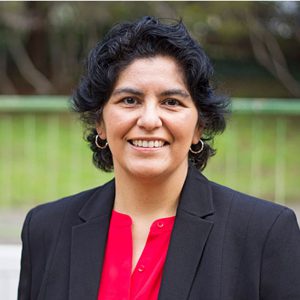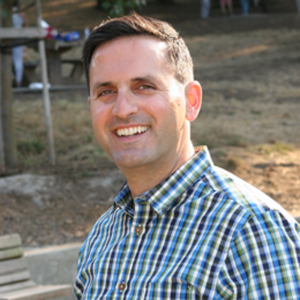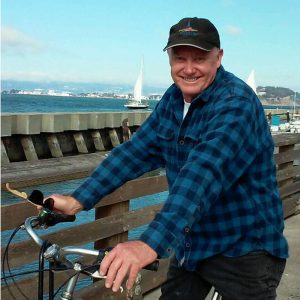Candidate Facts
 |
Name: John Farrell
Campaign Website: www.johnfarrell4supervisor.com |
Candidate Questionnaire
All official candidates were contacted and given the opportunity to answer our Candidate Questionnaire. Any candidate responses edited for length and clarity have been marked as such.
1. Do you ride a bicycle in the city?
Yes
If “Yes,” how often do you ride and for what purpose(s)?
I ride my bike every weekend. I enjoy riding. It’s one of my favorite ways to exercise, and I weekly bike to visit my father or run errands.
2. The City has established a goal to at least double the number of bike trips in the next 3 years. Do you support this goal?
Yes
If yes, what would you do as Supervisor to help the city realize it?
I will ensure that the City’s Bicycle Strategy has sufficient funding by identifying current revenue sources that have been ignored and hold City departments accountable in order to cut waste. I will advocate expanding our bike path infrastructure and improving its safety design so that it becomes an easy and safe way for commuters to travel without the need or desire for a car. I will support increasing bicycle sharing programs and bicycle parking, especially along commercial strips. I will work with local communities to educate and promote bicycling, foster ways for local business involvement, and encourage vehicle-free events.
3. Our City has embraced and adopted Vision Zero, the goal to eliminate all fatalities and serious injuries on our streets by 2024. Do you support Vision Zero?
Yes
If “Yes,” the city has yet to make significant progress since the introduction of Vision Zero in 2014. In fact, fatalities are on the rise. What would you do as Supervisor to help the city achieve Vision Zero?
I will immediately ensure that all high injury corridors have been addressed. I will advocate safety improvements and slow traffic strategies to best meet the needs of each location: using better road design; separating bicycle from other traffic, with the use of raised and highly visible crossings, protected bike paths, refuge islands, increased green lanes, bike friendly signals, raised pedestrian sidewalks, lower the speed limits, and increased enforcement. I will advocate that our streets be repaired from dangerous potholes and fissures and free of debris. I will work with our communities to educate and promote bicycle safety.
4. Research and data has shown that building high-quality protected bike infrastructure is the most effective way to increase the number of people who bike. Despite this, there remain very few streets and corridors in San Francisco with protected bike lanes. Do you support the significant expansion of protected bike infrastructure, recognizing that this is often achieved by reallocating space on our streets that may decrease on-street car parking or vehicle travel lanes?
Yes
If “Yes,” what is at least one street or corridor in your District that you think would most benefit from a protected bike facility and why?
In D7, Ocean Ave and 19th Ave are the two main streets that would benefit the most. These are highly visible thoroughfares and have a history of unacceptable cyclist injuries. I support the Ocean Ave Corridor and want to expand a safer solution for all of Ocean Ave. I also support the undergrounding of the M line that is currently running above 19th Ave and converting this on-street space to protected bicycle lanes and Pedestrian sidewalks. These two projects are highly visible and would set a precedent in changing the direction of our City towards a more bike friendly future.
5. The SF Bicycle Coalition participated in the Mayor’s Transportation 2030 Task Force, which identified significant funding gaps for a safe, reliable transportation system. To continue building out the bike network, the original need until 2030 was $360 million, which has now increased to $660 million, by City estimates. Do you support increased allocation and funding for bike projects to at least match the percentage of San Franciscans who bike?
Yes
6. The Department of Public Health has used data to develop the “high-injury network” to show the 12% of city streets where over 70% of the collisions occur. This map has also shown that low-income communities are disproportionately affected by traffic collisions. If Supervisor, what would you do to prevent collisions in your District at these known locations?
Safety is priority one, and is a very personal issue for me. I lost two friends in separate fatal accidents when they were struck while walking across a San Francisco street. I will ensure that all high injury corridors, including those in low-income communities, are addressed. I will advocate safer street design; separating bicyclists/pedestrians from other traffic utilizing options such as highly visible crossings, refuge islands, raised medians, overpasses, underpasses, lowering the speed limit, narrowing the streets, and utilizing buffer zones. Advances like the Ocean Ave Corridor and undergrounded M line will make a difference in transportation on the Westside.
7. Market Street is San Francisco’s most-biked street, with nearly 7,000 trips by bike counted here every day. The City is working on the Better Market Street project, which calls for limiting private automobiles, creating a continuous, protected bike lane for the full length of the project from the Embarcadero to Octavia Boulevard and significantly advancing transit and pedestrian-friendly street design. Do you support this plan?
Yes
8. Data has shown that the five most dangerous behaviors are all driver-related offenses: speeding, failure to yield to pedestrians, improper right-hand turns, running red lights and failure to stop at stop signs. The San Francisco Police Department has committed to maintaining 50% of their traffic citations to “Focus on the Five,” a goal they have yet to meet citywide. Do you support Focus on the Five and smart, data-driven enforcement?
Yes
9. As Supervisor, what will you do to ensure SFPD focuses enforcement on Focus on the Five or other known issues that make our streets unwelcome to bike on, such as double-parking in bike lanes, rather than ad hoc, complaint-driven enforcement?
As Supervisor, I will keep these issues in the forefront and work closely with the SFPD to ensure that there is an increase in police patrol to enforce these laws. I will also work with the SFMTA to make sure that Parking Control Officers are in place to fine violators. I can’t emphasize enough, that safer street designs and increased signage will prevent many violations.
10. Bay Area Bike Share is in the middle of a game-changing, tenfold expansion of its system to become one of the densest bike share networks in the United States. Do you support the expansion and placement of bike share stations in your District, even if this may mean repurposing of on-street vehicle parking?
Yes
District-Specific Questions
1. The SF Bicycle Coalition has been advocating for better bike connections from Balboa Park Station to Lake Merced for years. As Supervisor, what would you recommend to improve the biking and walking connections to and from this important transit hub along Ocean Avenue?
I support the 2009 SFMTA Balboa Park Pedestrian Bicycle Connectivity Study recommendations in redesigning the streets to include protected bike paths and pedestrian walkways along Geneva Avenue, Ocean Avenue, San Jose Avenue and Phelan Avenue utilizing highly visible crossings, refuge islands, buffer zones, signals, and lowering the speed limit.
2. According to the 2009 San Francisco Bicycle Plan, it is legal to ride a bicycle along the sidewalk of 19th Avenue due to the lack of a northsouth bike route here. There is currently a longrange planning effort to underground the MOcean View Muni line and repurpose the onstreet space to transform this freewaylike street into a peoplefriendly boulevard with dedicated bike lanes. Do you support this effort?
Yes
Why or why not?
I highly recommend this project because it makes absolute sense. It is an improvement to the current on-street use of the M line. This is a main thoroughfare with constant traffic and this will ensure the safety of bicyclist and pedestrians while improving the flow of traffic. It will help increase the services to the 18,000 new residents expected at Parkmerced. It will entice people to bike and walk and represents a major step toward sustainability.
3. We support a recommendation from the Ocean Beach Master Plan, which calls for a road diet of Great Highway, given the high levels of sand erosion. The result would be to repurpose two lanes of travel to become open streets for people biking and walking. Do you support this recommendation?
Yes
4. The Planning Department led the Ocean Avenue Corridor Design Study, which was completed in 2015 after extensive public outreach. Recommendations in the study included a redesign and plaza treatment for the intersection of Ocean, Phelan and Geneva Avenues as well as the inclusion of a westbound bike lane between I280 and Phelan Avenue. Do you support the study’s findings?
Yes
If “Yes,” what would you do as Supervisor to advance the design and implementation of the Ocean Avenue Corridor Design Study?
This project is crucial to help connect our City’s bicycle infrastructure and I will hold the Department of Public Works accountable for the delays and advocate to expedite whatever needs to be done to get this project underway. I don’t pretend to have all the answers, but I am a good listener, and as anyone who has read my many columns for the Westside Observer can tell you, I have a healthy cynicism toward bureaucratic inaction, especially when it represents a waste of our critical taxpayer funds.
Return to November 2016 Candidate Summaries








